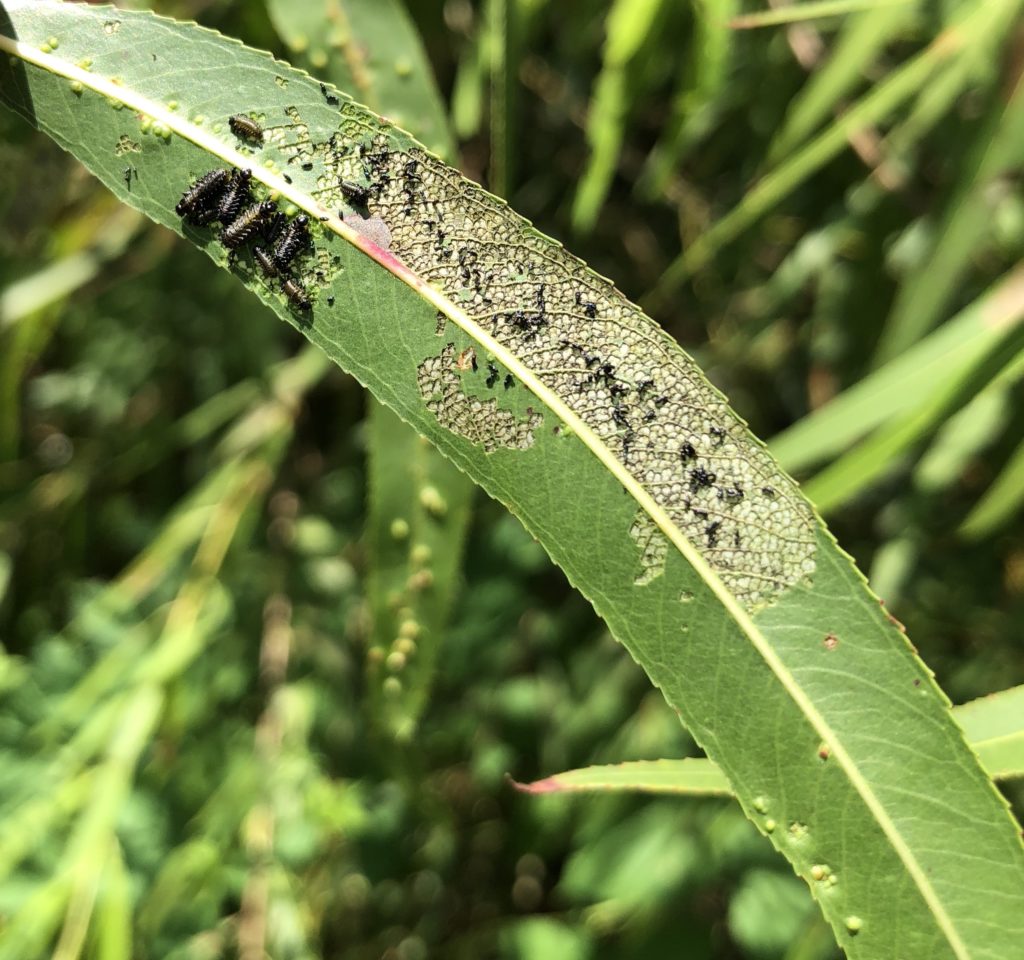Imported Willow Leaf Beetles
go.ncsu.edu/readext?547011
en Español / em Português
El inglés es el idioma de control de esta página. En la medida en que haya algún conflicto entre la traducción al inglés y la traducción, el inglés prevalece.
Al hacer clic en el enlace de traducción se activa un servicio de traducción gratuito para convertir la página al español. Al igual que con cualquier traducción por Internet, la conversión no es sensible al contexto y puede que no traduzca el texto en su significado original. NC State Extension no garantiza la exactitud del texto traducido. Por favor, tenga en cuenta que algunas aplicaciones y/o servicios pueden no funcionar como se espera cuando se traducen.
Português
Inglês é o idioma de controle desta página. Na medida que haja algum conflito entre o texto original em Inglês e a tradução, o Inglês prevalece.
Ao clicar no link de tradução, um serviço gratuito de tradução será ativado para converter a página para o Português. Como em qualquer tradução pela internet, a conversão não é sensivel ao contexto e pode não ocorrer a tradução para o significado orginal. O serviço de Extensão da Carolina do Norte (NC State Extension) não garante a exatidão do texto traduzido. Por favor, observe que algumas funções ou serviços podem não funcionar como esperado após a tradução.
English
English is the controlling language of this page. To the extent there is any conflict between the English text and the translation, English controls.
Clicking on the translation link activates a free translation service to convert the page to Spanish. As with any Internet translation, the conversion is not context-sensitive and may not translate the text to its original meaning. NC State Extension does not guarantee the accuracy of the translated text. Please note that some applications and/or services may not function as expected when translated.
Collapse ▲You can find a lot of damage on willows this time of year because imported willow leaf beetles have been feeding all summer. Imported willow leaf beetles (Plagiodera versicolor) are common on willows in landscapes and natural areas. Adults and larvae feed both on willow leaves but they look very different. The adults are iridescent black to blue and about ¼ inch long. Quite attractive. The larvae are dull gray to brown to army green. Not attractive. The eggs are yellow and resemble lady beetle eggs.

Imported willow leaf beetle larvae, frass, and skeletonized damage on a willow leaf. Photo: SD Frank
The adult beetles overwinter outdoors under bark or in leaf litter. They and emerge from hibernation sites in spring around the time willow leaves start developing since adults prefer new leaves. Adults and larvae skeletonize leaves, leaving larger veins intact. This gives trees a brown cast as damaged leaves crisp in the sun. In some cases though they can defoliate trees. Repeated defoliation, particularly in combination with other stress can kill trees or reduce growth.
Pubescent varieties of willow may be less affected than glabrous varieties. Also when you inspect infested willow trees you often see a lot of lady beetle larvae, pupae, and adults that eat the eggs. Thus, if the habitat is suitable to sustain these and other predators insecticides are often not necessary.
Insecticides labeled for leaf feeding beetles can be found in the 2017 Southeastern US Pest Control Guide for Nursery Crops and Landscape Plantings. If you plant a willow in a landscape these beetles and some damage are practically guaranteed. But, willows are great trees for certain locations, they grow fast, and often damage is hard to notice.



